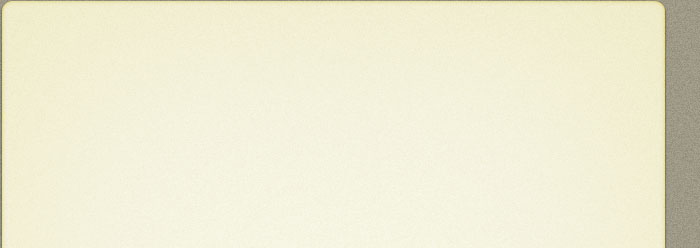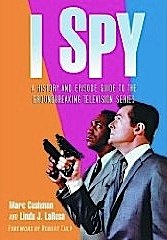I SPY
A History and Episode Guide to the
Groundbreaking Television Series
By Marc Cushman and Linda J. LaRosa
McFarland (2007). 418 pages. $39.95 (softcover)
The spate of books written about classic television series had a
longstanding and inexplicable gap that’s finally been filled by
McFarland’s bluntly titled I Spy.
This book follows what’s become the standard format for such titles, thoroughly researched coverage of the series’ development and production season by season, episode by episode. It does the job well, but not without some snags along the way. Most are minor and typical, but one is stupendous and horrendous: the hideously godawful reproduction of dozens of the book’s photographs. I can’t begin to guess why nearly half of the 100-plus halftones in the book turned out this way, and I’ve worked in print for years. McFarland has been in the publishing business even longer, so there’s just no excuse for a lapse of this magnitude. Most self-published books don’t look as bad. That such a flaw is included at all is annoying; that it’s repeated over and over is simply unfathomable and seriously degrades the value of the book.
The sources of some photos also could have been better. It’s quite obvious that most of the episode photos are not publicity stills but video frame grabs from the I Spy DVDs released by Image Entertainment (Image even gets a credit beneath them). That’s commonplace on-line, of course, but it’s disturbing to see it creep into print. And gee whiz, how difficult could it be to get clean copies of the three issues of TV Guide that featured I Spy cover stories? They’re reproduced here with subscription labels in place or with labels ripped off leaving the usual paper and glue detritus behind.
Authors Marc Cushman and Linda LaRosa, unlike a number of other writers of entertainment-industry books, did their homework and thoroughly researched their subject. But like many other writers, their expertise seems focused only on that subject. When placing I Spy in the larger context of 1960s television and the mid-decade spy craze, they identify Mission: Impossible’s leading lady as Barbara “Baines,” Martin Landau’s character in that series as “Rolland” Hand, the hero of It Takes a Thief as Alexander “Munday,” and his employer as the CIA.
They have Patrick McGoohan starring in Danger Man beginning in 1962, “Our Man Flint” hitting theaters in the summer of 1966 and Irwin Allen producing “The Silencers.” They misspell the names of Joseph Cotten, David Janssen, Andrew Duggan, Jack Paar, Dick Van Patten, Mark Richman, Nancy Kovack, Mike Connors and other well-known performers of the period. And apparently they have no idea that Berkely Mather, writer of two I Spy episodes, contributed to the screenplay of “Dr. No,” the first James Bond film and the production that launched the entire spy craze, certainly a connection worth noting.
One reason for these slips becomes apparent after reading several chapters: the writers obviously are too young to have seen I Spy in its original run. The fabled 1960s to them is not a fondly remembered period of their youth. It seems, rather, to be a semi-medieval era in which the authors believe that a typical American husband locked his wife in the house when he left for work every morning, and minorities were not permitted to walk the streets unsupervised until I Spy came along and changed the world. This skewed and rather condescending view of the 60s is cropping up in more and more pieces written by people who suffered the terrible misfortune of being born too late to have lived in the 60s.
The writers also came somehow to the conclusion that a “TV Guide Closeup” — the larger than standard listing the magazine gave to several notable shows each week — was an honor exceeded only by the Nobel Peace Prize, and they rave on and on about the number that I Spy received: 13. Thirteen — over the course of a three-year, 82-episode run, plus 20 or more repeats each season for a total of some 150 weeks on the air. Thirteen. Wow.
Okay, gripe gripe, carp carp, what else is new. But I have to get it out of my system because these things are so annoying and so unnecessary. With all that noted, I am happy to report that the book’s virtues far outweigh its faults.
The authors did indeed dig into every nook and cranny involved in creating and producing I Spy, talking to a wide range of writers, directors, actors and others who contributed regularly or sporadically to the series. Network and production company records were minutely sifted, previously published interviews exhaustively mined, and careful notes made of how the celebrated banter between series stars Robert Culp and Bill Cosby differed from the written scripts.
And to their everlasting credit, the authors conducted extensive new interviews with Culp and Cosby. Culp seems to remember every detail of his career and never hesitates to talk about them at length whenever asked. Fortunately, he’s always coherent and entertaining at the very least, and often provocative and fascinating. Even more fortunately, Cosby made himself available and seems to have cooperated fully — something he hasn’t always done since the huge success of The Cosby Show made him an industry dreadnought. His comments are equally fascinating and invaluable in complementing and balancing Culp’s. And the participation of both ensured that this is the genuine, comprehensive story and not just another glorified fanzine.
Still, it’s a shame the authors didn’t get started 20 years ago when Sheldon Leonard, Mort Fine and David Friedkin, the three key members of the production team, were alive and available. Executive Producer Leonard came up with the concept and put the show together, then hired the talented producing-writing-directing team of Fine and Friedkin to make it work. The absence of all three from this narrative leaves a gaping hole that the friends and family members interviewed can’t begin to fill — although associate producer Ron Jacobs, a longtime member of Leonard’s team and the nephew of Leonard’s former partner Danny Thomas, proves invaluable at bridging some of the gaps.
So please be assured that I Spy – A History et. al. belongs on every spy fan’s bookshelf, despite its minor flaws. But let us pray that if there’s ever a second edition, McFarland will fix the major flaws with properly reproduced photos.
Craig Henderson




